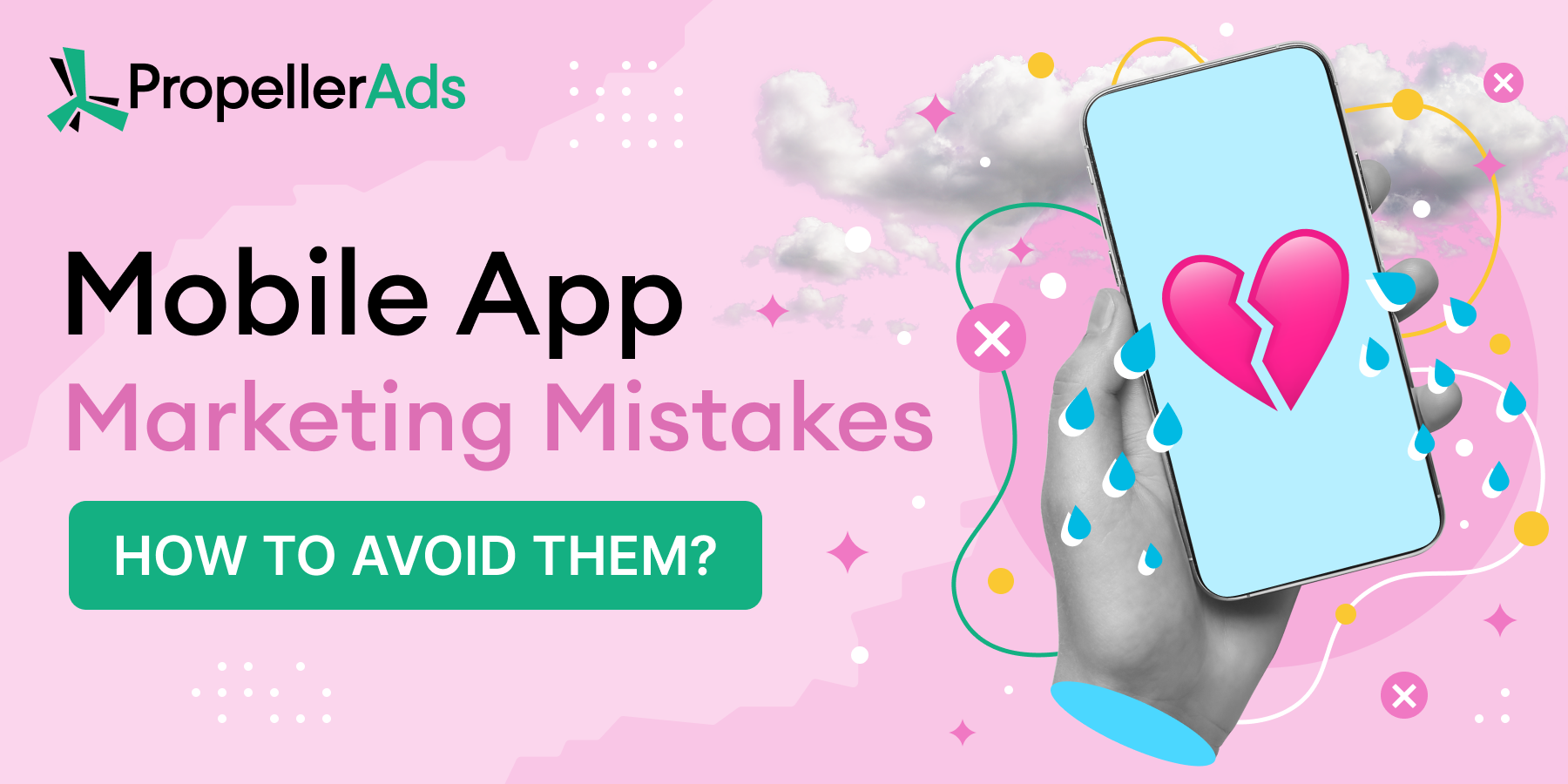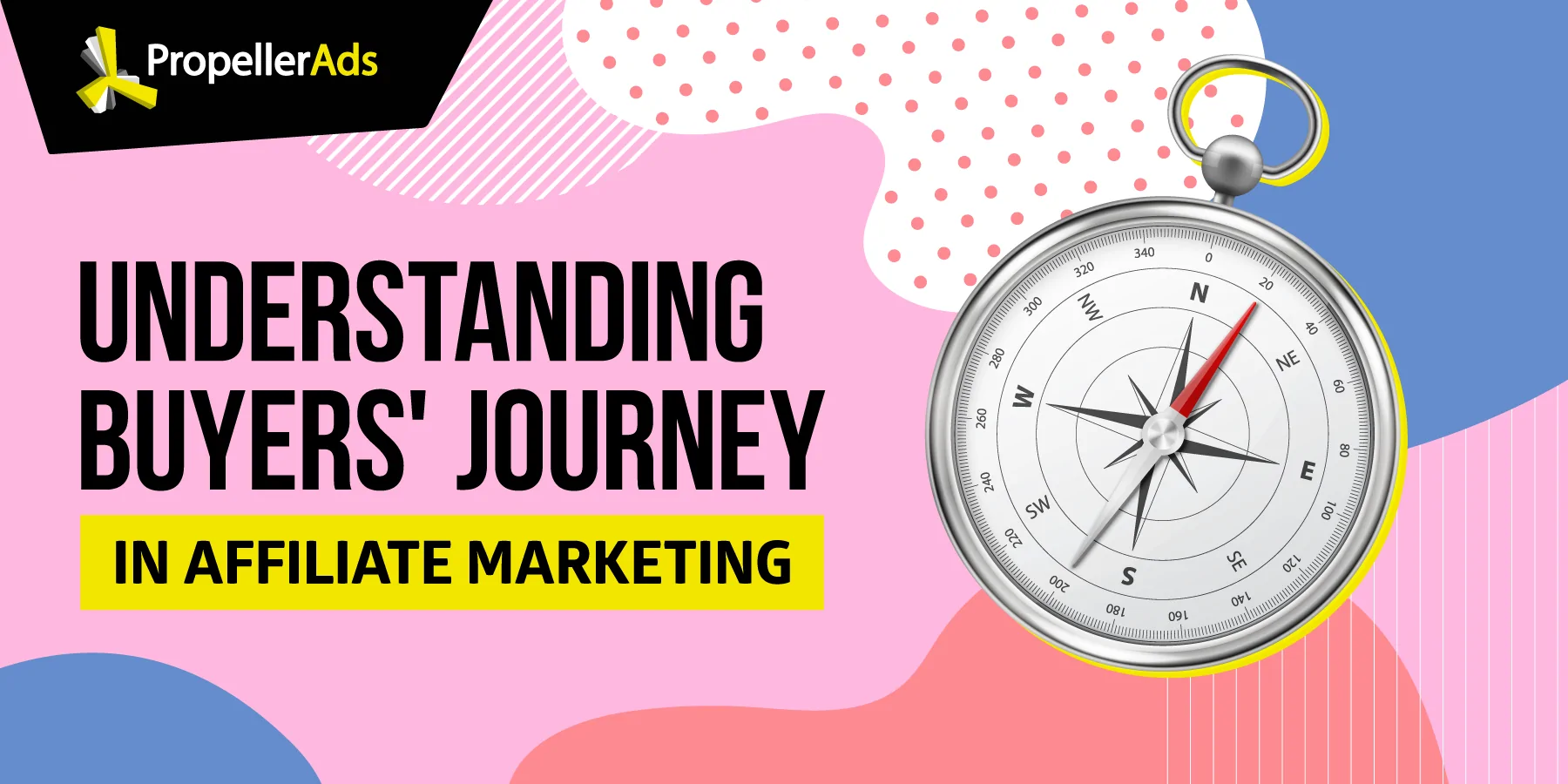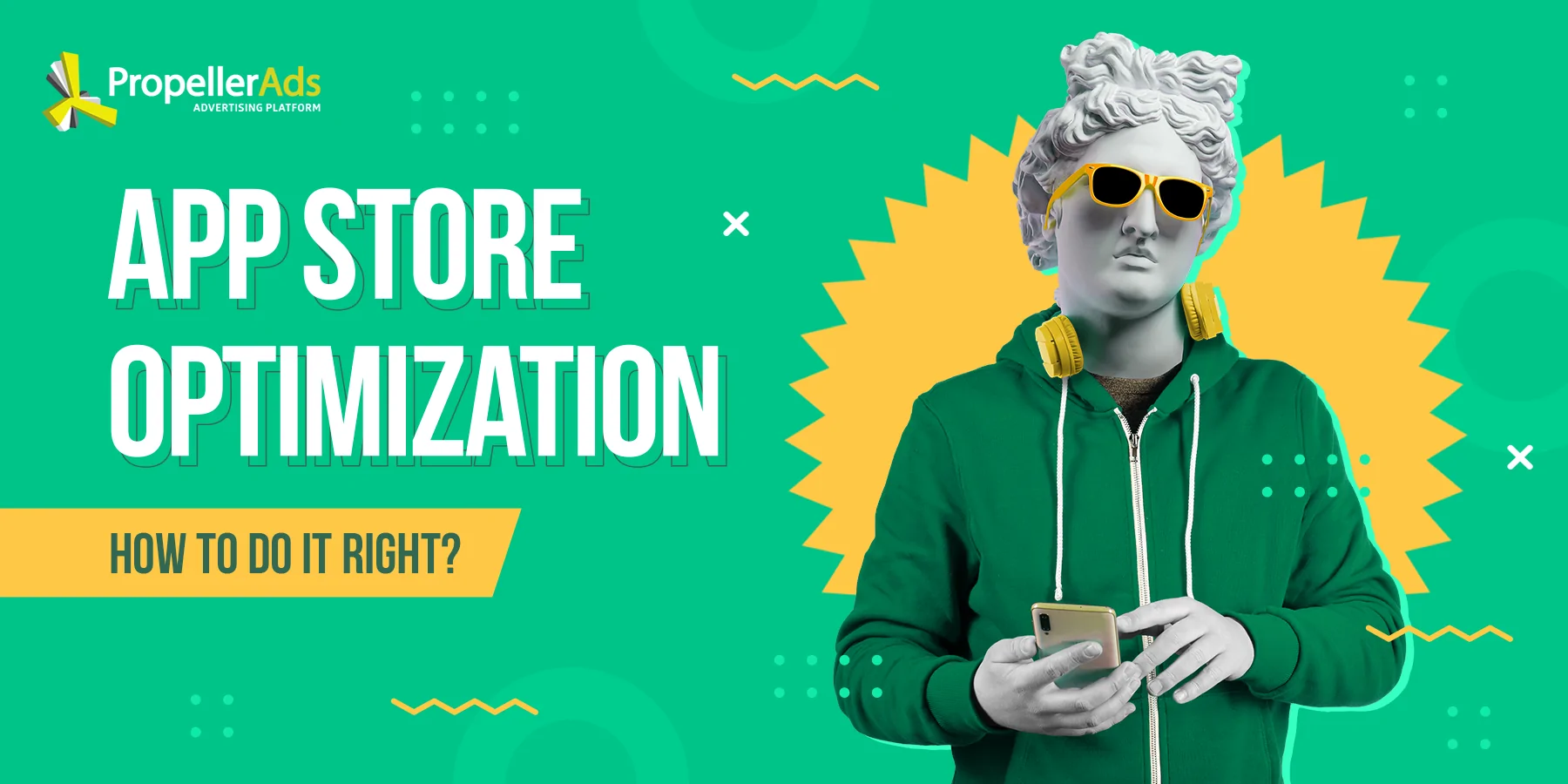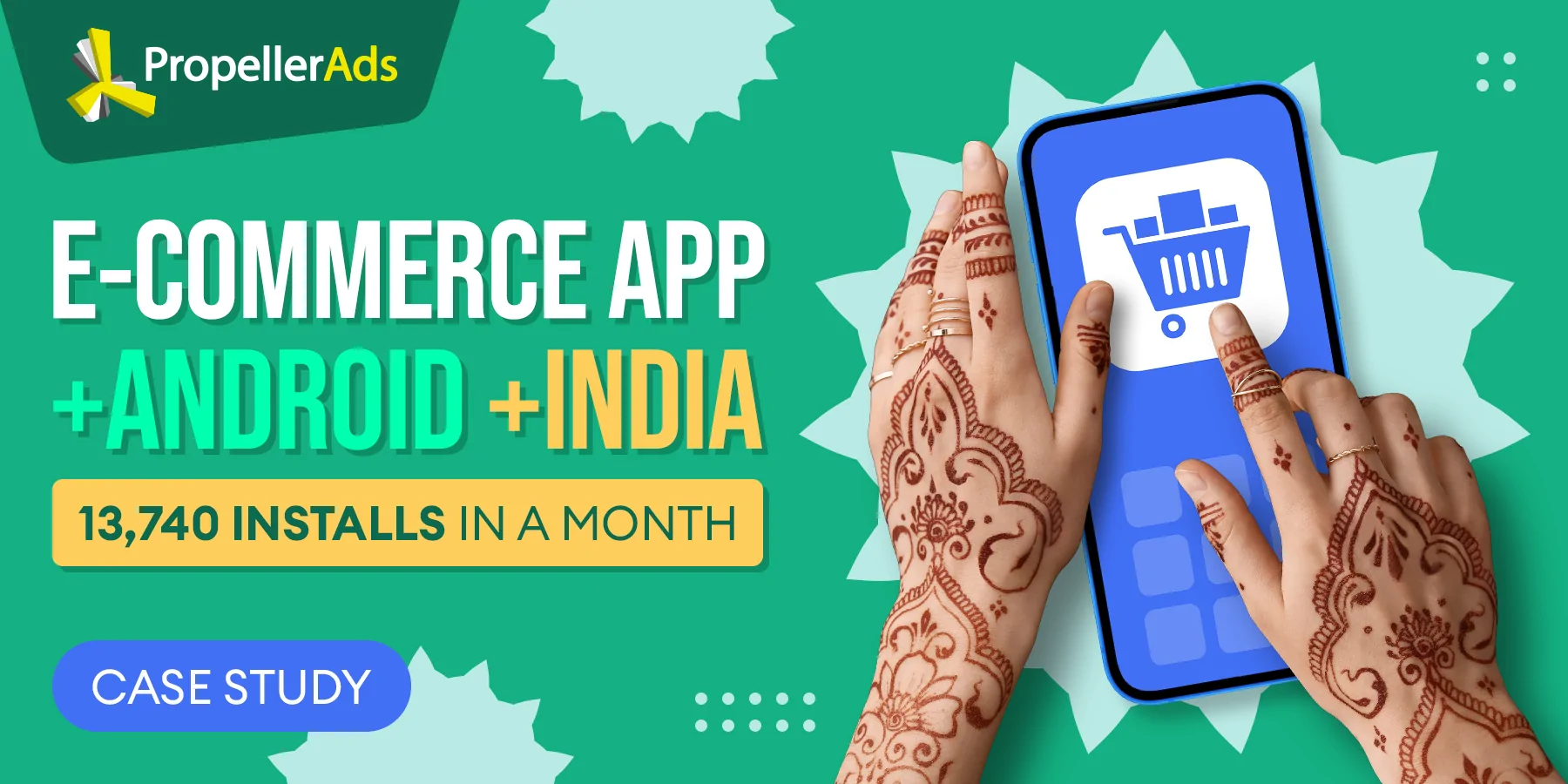Common App Marketing Mistakes: How to Deal with Them?

This post is also available in:
PT
ES
Modern smartphone capacities are about to get even more powerful than those a PC has. Maybe, the only thing smartphones fall short of laptops today is generating content, but they are perfect for content consumption, browsing, downloading, installing, and spending money in all ways. And this is exactly what marketers and brands with apps need to know about the tendency.
What about app promotion peculiarities and possible mistakes?
Well, the first potential mistake is ignoring the profitability of mobile applications advertising. Let’s assume that if you are reading this, then you are out of risk at this point. Let’s find out more about other common mistakes to make sure you avoid them.
Exclusively for our readers: we asked Renz Gonzales, PropellerAds’ Head of Business Development, and Ilya Pasyuk, Senior Developer at Applabz, to give comments, referring to their experience.
Mobile app ads mistakes: how not to spoil everything?
Mistake #1: Overcomplicating user journey
The main challenge in app advertising is less flexibility compared to standard digital marketing. Let’s be honest, motivating people to download and install an application (and sometimes – to make additional in-app purchases) is harder than encouraging them to visit a website, watch a video, or complete a registration form.
The most common conversion types for app marketing are not that simple. They include:
- CPI (cost-per-install)
The most common conversion type for applications is CPI, where the conversion is counted when users download and install the app.
- APK (Android application package)
APK works the same as CPI, but specifically for Android apps.
- CPE (Cost-per-event)
CPE is a pricing model that requires not only download and install of an application, but also a certain action from a user after he opens the app. This “event” might be subscription, purchase, or any other in-app action.
- Free trial
Free trial is a conversion type where users are expected to accept the free trial version of an app. The ideal scenario is that a user tries the app for free (3-30 days) and hopefully gets a paid version.
The conversion flow is the main challenge and a source of mistakes most affiliates and brand owners make – they tend to make an already complicated process even more difficult.
Make sure to avoid adding any extra-steps into the user journey when planning your promotion. The less actions a potential lead makes, the more chances for conversion you have.
Mistake #2: Failing to be specific with your promotions
When preparing promo materials for a campaign, you need to have a full understanding of how the app works, what benefits it has, and what problems it solves.
Considering fierce competition in the mobile app market, where numerous samelike offers exist, it’s really important to give precise information about your promoted product instead of simply praising it.
Example:
- Bad description:
“Download our incredible app now! It’s super efficient, guaranteed to change your browsing experience.”
- Good description:
“Enhance your online security with our VPN app. Safely browse the internet, access geo-restricted content, and protect your personal data from prying eyes. Try it now for a safer online experience.”
Mistake #3: Ignoring relevant traffic sources
Organic traffic from social media definitely can help you get more conversions. There CPI models in various platforms, including Facebook, Reddit, TikTok, Pinterest, etc.
Still, mobile ad networks, in other words – advertising networks, where you can buy traffic for your mobile app offer, are easier to approach in terms of policies and rules to follow. We just want to remind you that PropellerAds has tons of high-quality traffic for your app promotion. Use all the opportunities for the best results.
Renz Gonzales:
It’s easy to fall into the trap of thinking that once your app is out in the world, it’ll speak for itself. But every time someone downloads your app and finds an issue, he is likely to voice his concerns in the form of reviews. Imagine ignoring these and losing out on valuable insights!
For instance, a game developer might receive feedback that the controls are too complicated for casual gamers. Instead of brushing this aside, it’s golden feedback to simplify and improve gameplay. So, always keep your ear to the ground, take user feedback on board, and use it as a guide for improvement.
Mistake #4: Lack of Post-Launch Marketing
Renz Gonzales:
“Imagine throwing a massive party (your app launch) and then never inviting anyone again. Sounds like a wasted opportunity, right? Just because your app is out there doesn’t mean the work stops. Think about all those app updates or holiday events. For instance, a shopping app could have post-launch campaigns around holiday sales, enticing users to come back for deals.”
Mistake #5: Ignoring ASO (app store optimization)
In general, each app’s final destination is an app store. And successful work with an app store means that you do some optimization to increase your product visibility, which is crucial for brands and publishers in the first place.
Ilya Pasyuk:
“It’s not that easy to bring your app to the top of search results, since so many factors influence its position, including downloads, rating, conversions, and more. There are even search specifics for different users, like their GEO. Still, considering the fact that marketers are striving for conversions, it is important to make your app visible for organic users. This is where ASO can help.
Basically, if you optimize the app listing with the right keywords, your advertising will become easier and won’t require too much time. Smart ASO ensures that people will actually see your app in a store and that’s your chance to get some additional organic traffic.”
Mistake #6: Failing to ensure user retention
Again, brand owners and publishers should keep in mind that people abandon and delete applications too often to ignore retention practices.
As Andrew Chen claims with a reference to Quettra, the average app loses 77% of its daily active user within the first 3 days after the install and 90% – after a month. In three months, the number grows to 95%, which means that most apps lose almost all of their users in about 90 days.
Yup, people don’t continue using an app just because they have installed it once. They return because it brings constant value, so you need to think about delivering something hot and fresh. To do so, you will need to evaluate your audience and understand their needs better. Or an evergreen strategy – make promotions, give rewards, and discounts on a regular basis.
Mistake #7: Ignoring Localization and Regulations
Renz Gonzales:
“Ever used an app and thought, “This doesn’t feel right for my region”? That’s because it probably wasn’t localized. It’s not just about translating language, but also understanding the user’s culture, regulations and nuances. For instance, a skill-based app might be a hit in India, but in the US, it might need to factor in industry restrictions and best practices. Dive into the local legislation and vibe, and you might just hit a universal chord.”
Mistake #8: Poor Monetization Strategy
Keep an eye on ad frequency and make sure to find a balance between user experience and monetization. Here is the expert’s comment.
Renz Gonzales:
“Here’s the scene: You’ve found a cool new app. But two minutes in, you’re bombarded by ads, and before you know it, you’re uninstalling. Sounds familiar? It’s essential to remember that while ads might bring in money, they can also turn users away if overdone.
Take, for example, a utility app that has pop-up ads every minute. Users are likely to switch to a more non-intrusive alternative. Instead, consider subtle banner ads or offer a premium ad-free version.”
Mistake #9: Failing to Keep the App Updated
Renz Gonzales:
“No one likes stagnation, and in the app world, this rule holds even more truth. Remember that trendy app you used religiously a year ago? Now, it’s just sitting on your phone because it hasn’t updated in months and is full of glitches.
Keeping your app fresh and bug-free is like offering a user a warm welcome every time they open it. If a finance app, for instance, introduced new payment features or synced with the latest wearable tech, users would likely stick around for longer.”
Instead of conclusion
As you can see, there is nothing too complicated about avoiding the mistakes described above. However, it’s not that easy to fight with their consequences, so make sure you fix them before it becomes tougher. Learn from the mistakes of others and happy app advertising!





